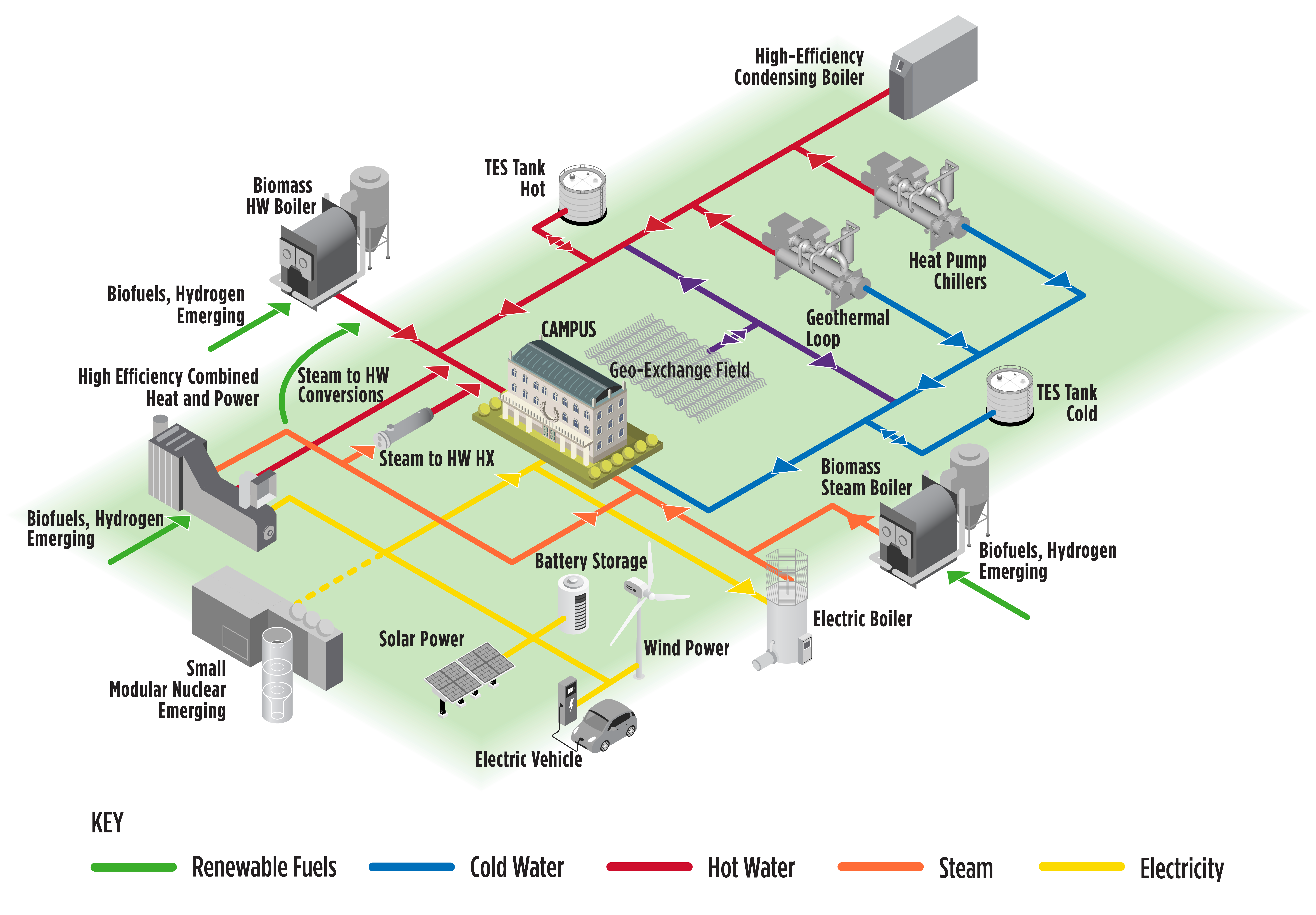The perennial issues faced by the nuclear industry are the same ones that must be addressed when evaluating a district energy system’s incorporation of microreactor technology.
Safety and Fuel Storage
Though all the advanced reactor technologies under development are designed as passively safe systems — meaning they avoid the risk of potential failures faced by traditional light-water reactors — on-site storage of spent fuel is an operational issue that must be addressed. With many campuses located in or near highly populated areas, long-term fuel storage on-site would be undesirable. Containerized microreactors could provide a workable solution for this challenge, however, with wholesale replacement of the entire reactor module when refueling becomes necessary (typically expected to be eight years or longer).
Security
The NRC has published proposed alternate rules for physical security requirements of advanced reactors to include topics such as elimination of on-site dedicated armed responders, reliance on local law enforcement or other armed responders, engineered systems or human actions designed to delay incursions by intruders, and options for locating the secondary alarm station off-site. These protocols must be evaluated when siting a microreactor.
Fuel Availability
Fuel availability is another risk factor. Most advanced reactors are designed to use high-assay low-enriched uranium (HALEU). These HALEU fuels are enriched to between 5% and 20% U-235, compared to the low-enriched uranium used by light-water reactors. This energy-dense fuel provides for a smaller core, and thus, a more compact reactor design. Development of domestic HALEU fuel enrichment facilities is underway in the U.S. market, but it will be several more years before HALEU is commercially available. Protypes are now being tested by the Department of Energy (DOE), and results have been promising, but HALEU fuel has been available only in very limited quantities and has yet to enter domestic commercial production. DOE expects larger quantities of HALEU fuels will not be available until 2030 at the earliest. One company is preparing for prototype testing at Idaho National Laboratory in 2025. Some microreactors are being designed to use standard low-enriched uranium (LEU), used in conventional commercial reactors today, as an interim fuel solution.
Operations and Maintenance and Control
Extensive training on new technology would be required for district energy personnel. General operations and integration with campus utilities would be one primary issue, while procedures to operate and control the reactor introduces a completely new technology that would be unfamiliar to many. The standardized design and passive safety features inherent with microreactors, however, promise a far lower level of operational complexity compared with commercial reactors.
Cost
While some tax credits and other incentives are available under the U.S. Inflation Reduction
Act (IRA), institutions willing to serve as early adopters are likely to bear a large cost burden to advance this technology. The price of constructing these technologies is still a moving target for first-of-a-kind installations.
Licensing and Permitting
The cost and schedule associated with the current NRC reactor licensing process is untenable for a campus energy application. There are two primary NRC licensing pathways for nuclear power facilities, and both take approximately four years to complete just to receive an approved permit for construction. These processes have been in place for decades and are tailored for licensing of large commercial light-water nuclear reactors. Universities may have an expedited licensure option, however. Applying to the NRC for a license for a nonpower, or research, reactor could help avoid the extended and costly review required under the current licensure pathways. However, research reactor licensing limits usage to a defined steam output.


